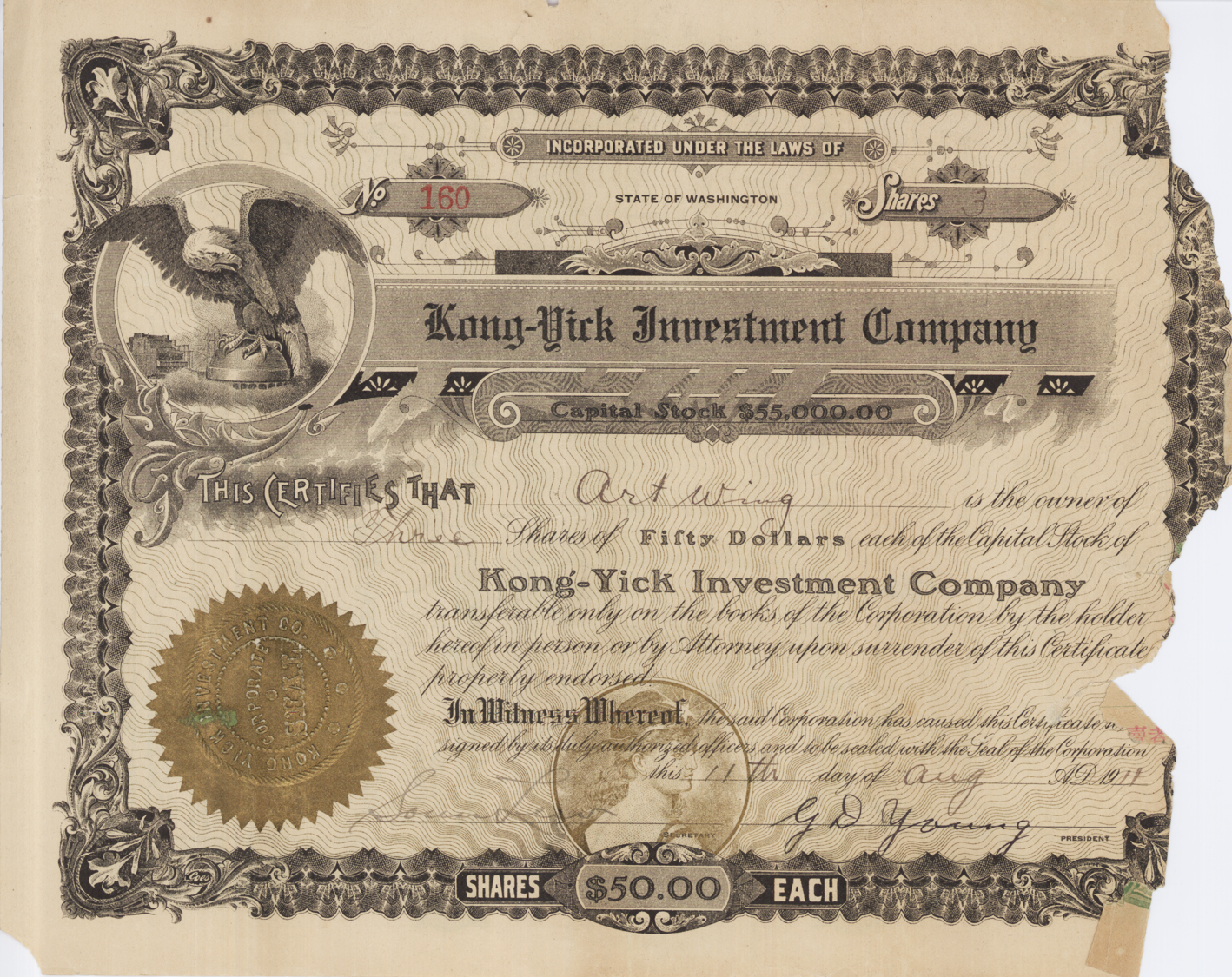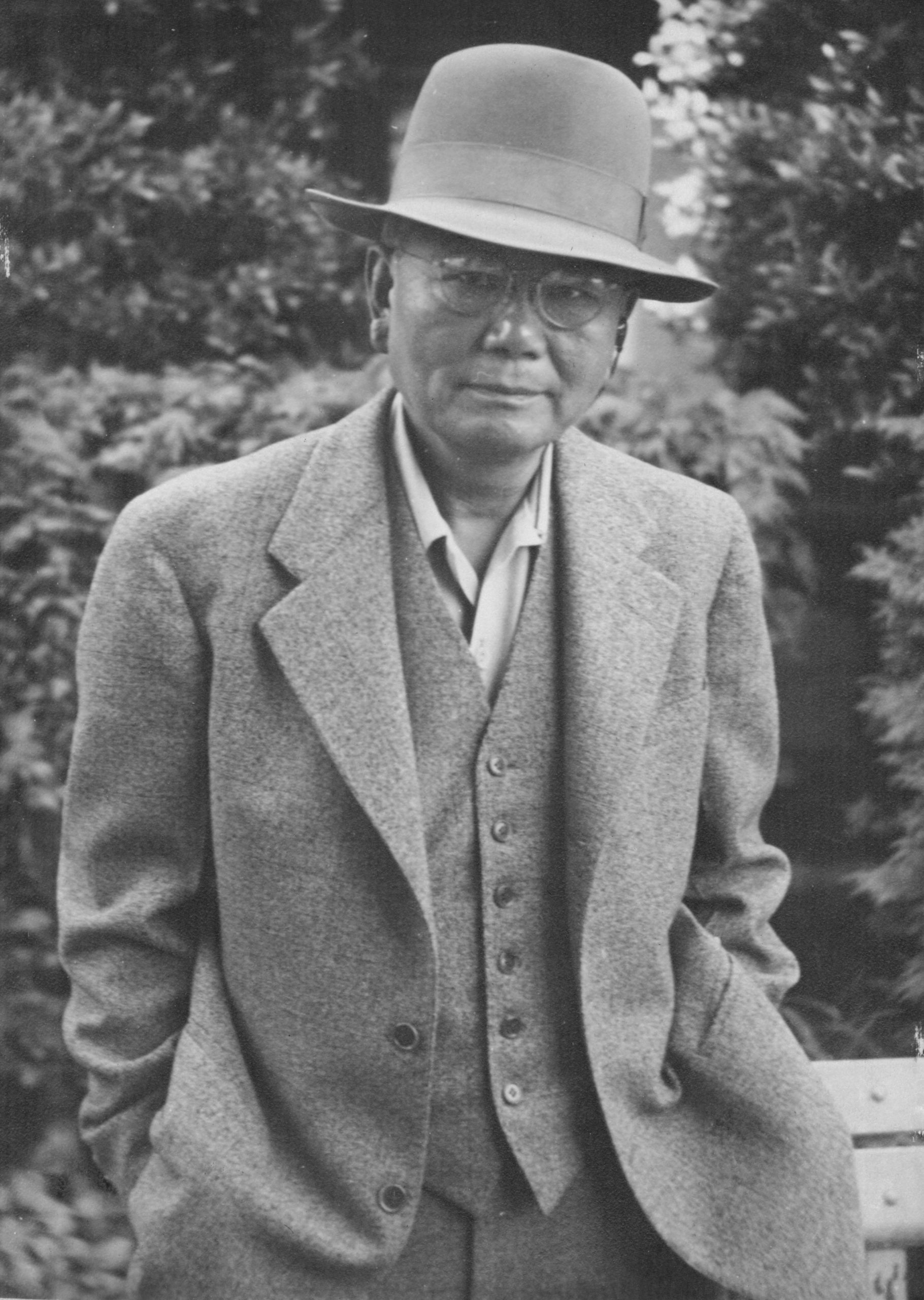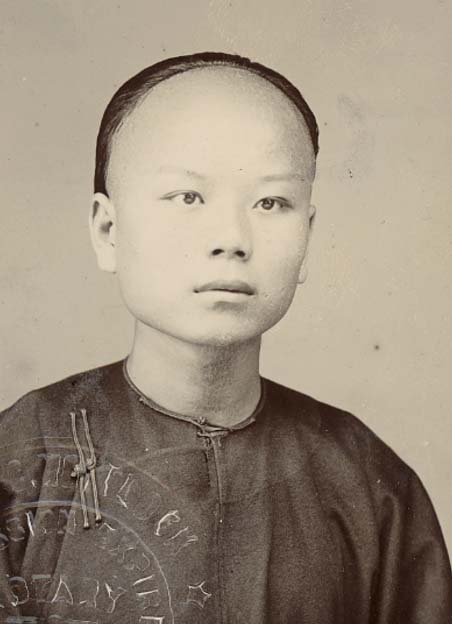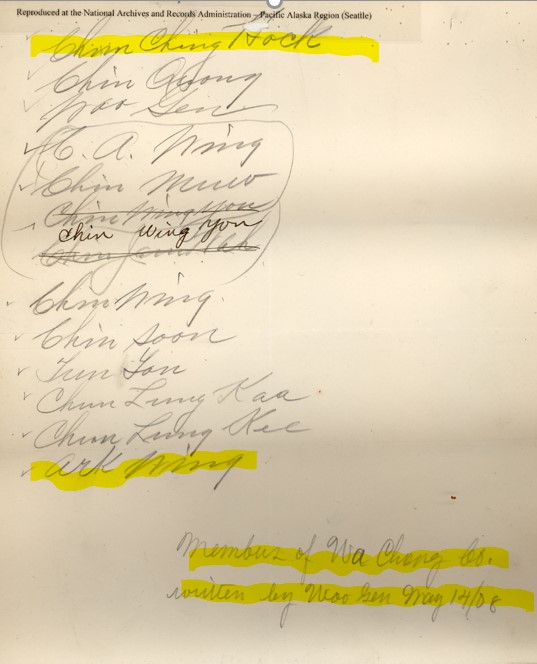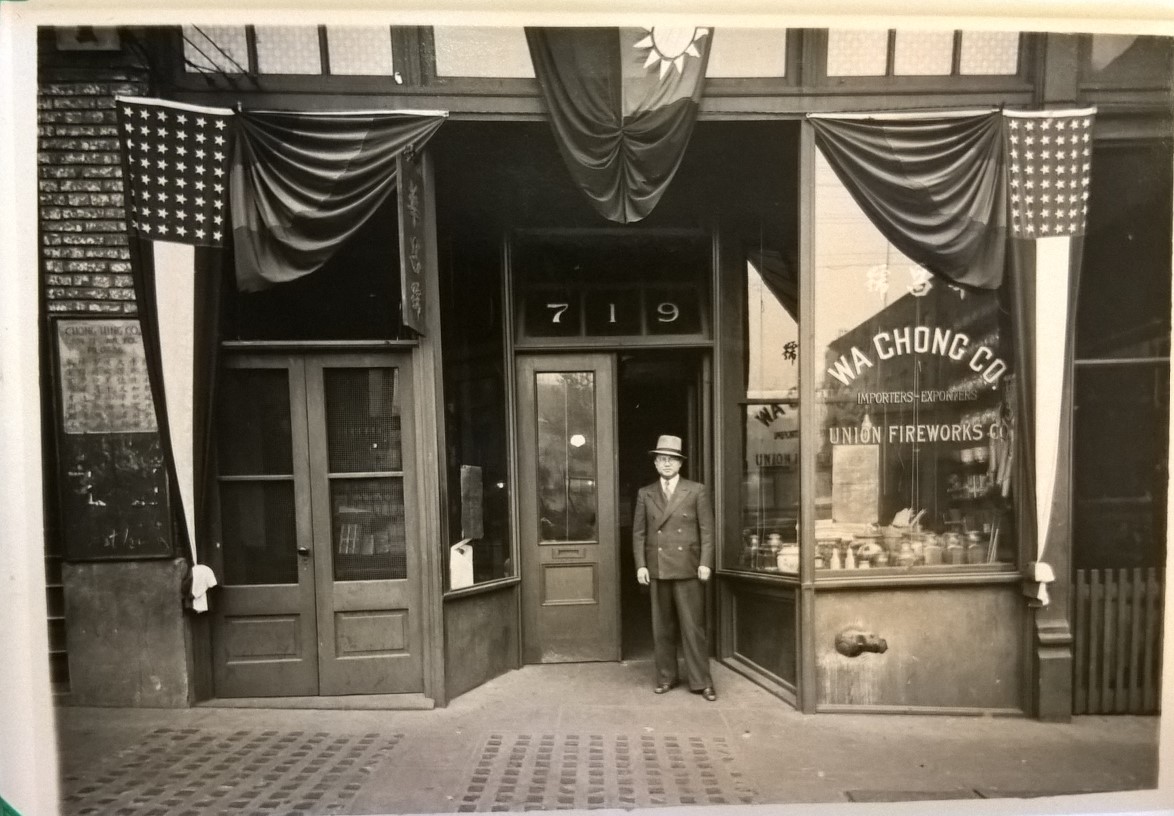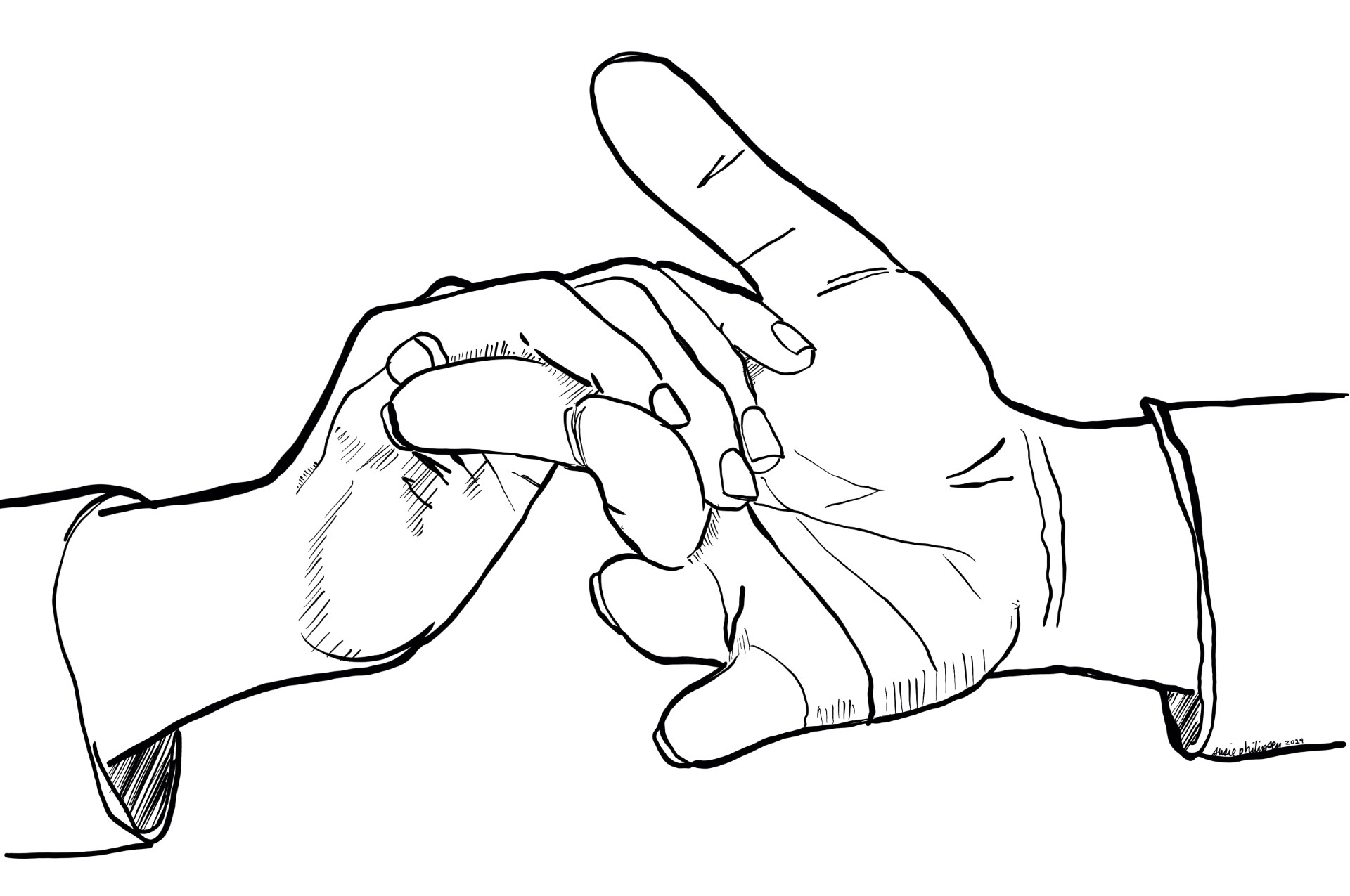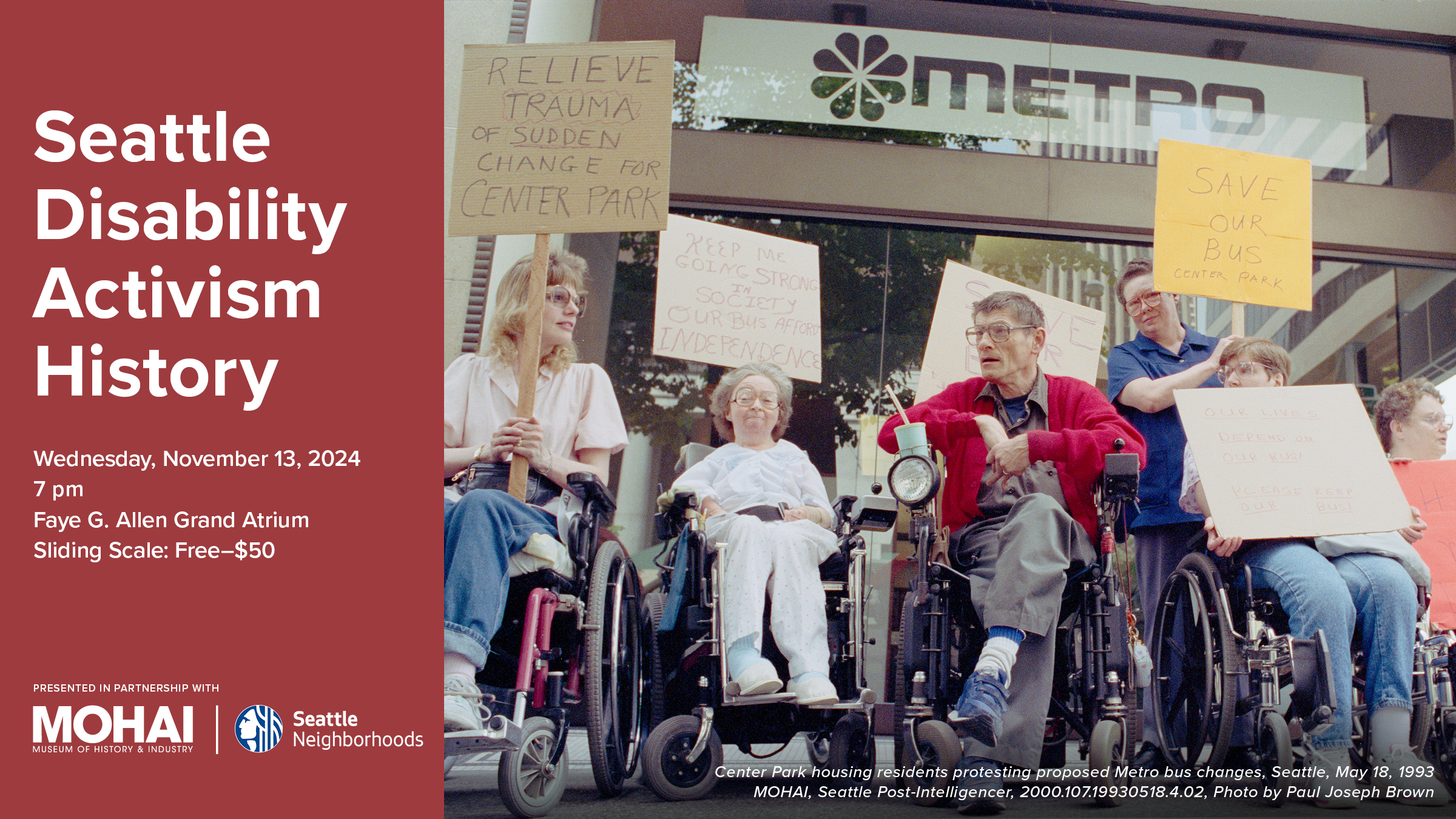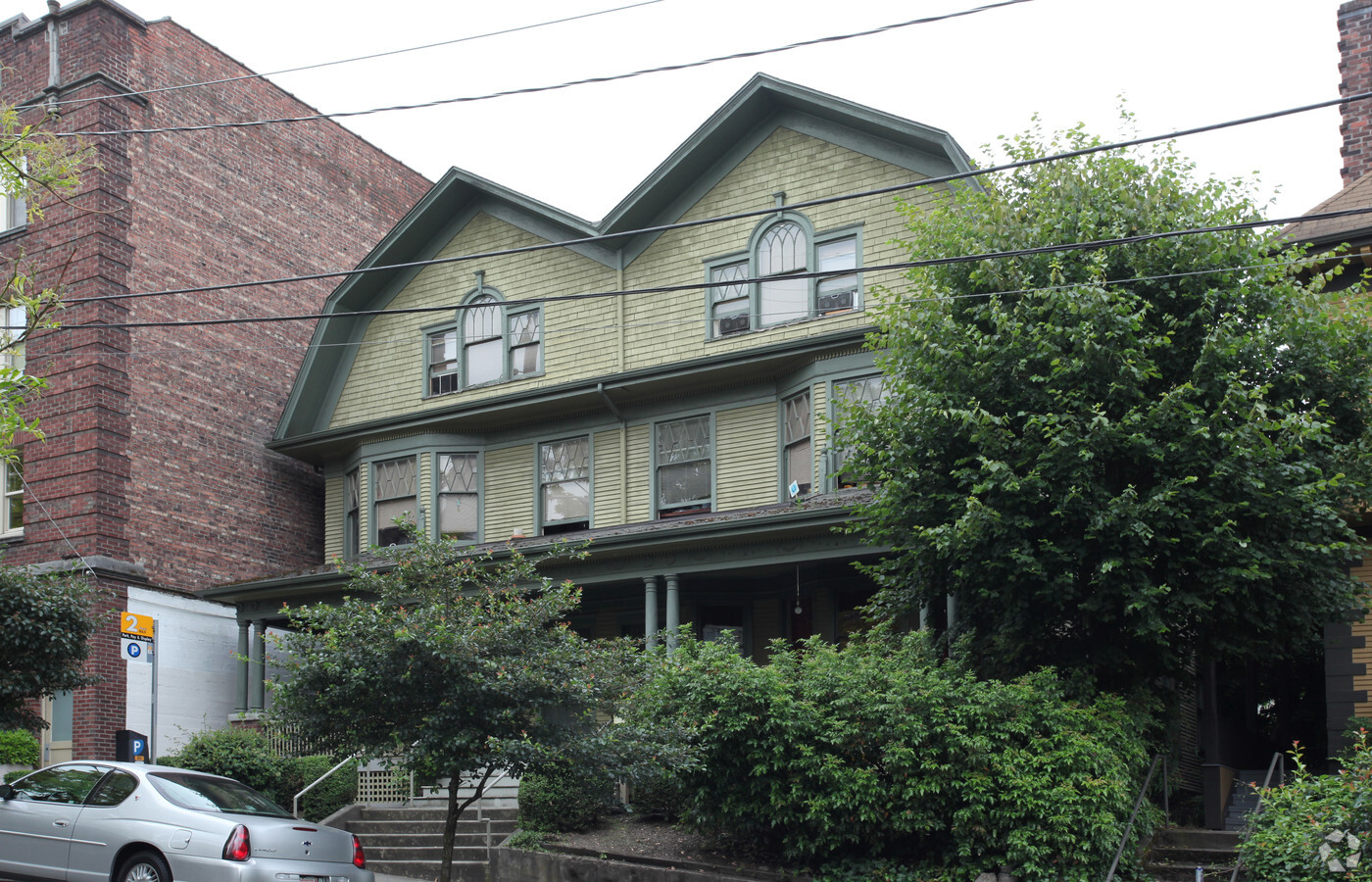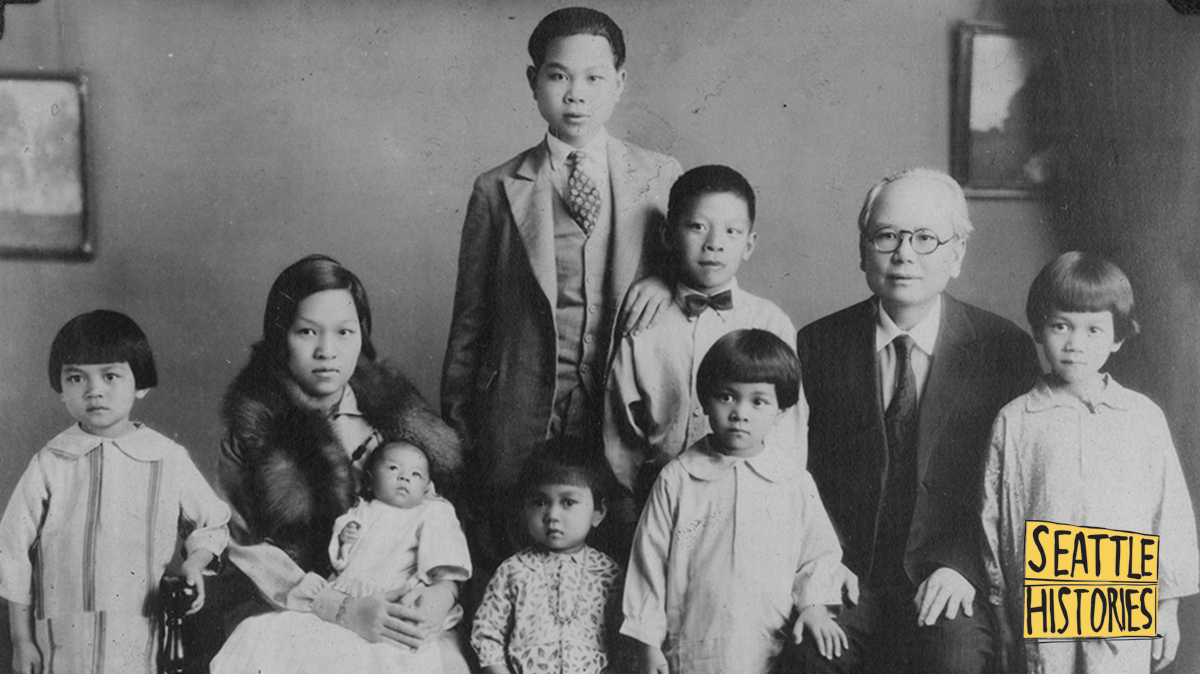
Historic preservation in Seattle begins with community. The Seattle Histories storytelling project highlights the places, people, and events that have shaped the history of Seattle’s communities. These stories, told by community members, emphasize experiences and narratives that may have been overlooked or misrepresented in our city.
My Grandfather’s Queue
By Elana Lim
In the fall of 2005, when our oldest son was twelve, I took an afternoon off from the startup where I worked as an executive to chaperone his class, 50 raucous sixth graders from Seattle Academy, on an excursion to the Wing Luke Museum. Affiliated with the Smithsonian, it is the only community-sourced museum in the United States focused on the history of Pan-Asian Pacific Americans.i I’d never been to the 40-year-old museum, located in a refurbished 1930s auto repair shop in the Chinatown-International District. Caught in traffic, I was a little late and rushed to follow the last student through the mustard-yellow door.
First, a guide led us through a recreation of a Camp Harmony horse stall, one family’s home during the World War II internment of American Japanese. After we sat down, he explained President Franklin D. Roosevelt’s 1942 Executive Order 9066, which gave the military permission to incarcerate 120,000 people – two-thirds of them American citizens of Japanese descent, one-third of them immigrants from Japan. The propaganda rationale, disproven in the Korematsu case of 1983, was that anyone who shared ethnicity with the Japanese enemy must be a security risk.ii
The guide then handed one boy a laminated copy of the order – the kids got frisky and played hot potato, barely touching the leaflet, which landed finally with another chaperone named Jim*. He was a white man my age and had grown up on the West Coast. As he read, I saw his face flush, starting at his neck and moving up his ears. “No,” he said. “This didn’t happen. It’s illegal.” I was surprised. Jim was an attorney: Didn’t they teach historical cases in law school? But how could I assume that? I had learned about internment not in my American history class at a Seattle high school but from my father, whose Japanese friends had disappeared one day from his fifth-grade class.
Jim went on to ask if my family had been imprisoned. “We’re Chinese,” I said. “Only Japanese were interned.” Now his face reddened again. I didn’t mean to make him uncomfortable, but I didn’t know how to continue the conversation, so I excused myself and wandered to the other end of the exhibition room. As I clicked my phone to check my voicemail, I stopped at a row of locked glass cases displaying artifacts from the East Kong Yick, one of two brick buildings constructed in 1910 as the new center of Chinatown. Astonished that the exhibit featured the place where I grew up, I leaned in closer. I had no idea that my building had a name or history. A ledger with a black and red cover spread wide open caught my eye. “Kong Yick Investment Company stock journal,” read the explanatory text on a small card. In this book were recorded “names of the more than 170 Chinese men” who had been the original stockholders of the East and West Kong Yick. One name shook me, and I began to tremble. Art Wing. My father’s father’s name was Art Wing Eng. Was this my grandfather? Slowly, gently, I turned off my phone, mouthed the handwritten entry: Art Wing, and started to hyperventilate, blinking to ensure I had seen it correctly. I kept whispering the record so I could hear it; Certificate: 160 Number of shares: 3 Date: August 11, 1911 To Whom Issued: Art Wing.
Three years earlier, when my father died, I’d read a book about grief that advised keeping a journal of coincidences. I had been tracking happenstances since then. Over time, the book said, your coincidences will start to make a kind of sense. Until that moment, I was content to note them as serendipity, but this was different. Could it be that this find was ancestral guidance? The idea frightened me. Memories flooded my imagination as I recalled what Dad had told us, that Grandma Ou Shee and Grandpa Art Wing Eng had come to America in 1920.iii There was a nine-year gap. I was certain this Art Wing could not be my grandfather.
Ignore? Move on? I looked around. I wanted to tell someone what I might have found. Nobody was nearby, and no stranger could verify my suspicion, even if someone had been. When I need to think out loud, I usually call my mother. I dialed her. Mom would brainstorm with me. That’s what we do. When she answered, I whispered my discovery. Mom was silent for a moment, then she told me that after Pudge – my father – died, she had found a brown box he’d brought from my grandmother’s apartment and that it had been stored unopened in their basement among things of his that she could not bring herself to throw out. “Let me look for it,” Mom said. “I’ll call you back.”
I fidgeted. I felt a slight buzz. A vitality. A spiritedness. I went outside for air. I couldn’t stop checking my phone. Mom called ten minutes later.
Excited, she told me what was in the box – photos, Grandma Ou Shee’s death certificate, and birth certificates of children she had never heard of. Then she got serious. “I’m holding the original stock certificate 160, dated August 11, 1911, as sold to Art Wing,” she said, pausing before her voice got strangely solemn: “Elana, that man in the book is Pudge’s father, your grandfather.”
Art died in 1952, nine years before I was born, so I knew him only as the kind-looking man in the 5-by-7 black-and-white framed photo on a cabinet in our street-level apartment, number 507, in East Kong Yick. Yet, as my mother spoke, I felt a door open. Since high school, I have dedicated myself to moving forward my American dream of success and prosperity, and I have not looked back. Now I had a choice. If this piece of evidence was real, I had to ask myself if I would change course and explore the history behind it or continue to ignore learning about where I had come from. It seems to me now that at earlier times in my life, I would have ignored it.
Over the next several weeks, I surrendered to the coincidence. I met with the museum’s collections manager, Bob Fisher. That the ledger with the red and black cover was exhibited in the museum’s inaugural show was fortuitous, but that I had found my grandfather’s name was an even wilder coincidence than I’d thought. To protect the book’s binding, Bob told me, he unlocked the case each morning and turned at random to a new page. Art Wing had entered the glass case that day only by chance. In the months following, I set myself to researching.
In June 1903, seventeen years earlier than I thought, Ark (sic) Wing Ng had arrived in Vancouver, Canada, from Hong Kong. On the 17th, he sailed from Vancouver on the S.S. Victoria, disembarking at Port Townsend where he was collected by Yen Wing Ng, the man identified as his father, who was registered as a “domiciled Chinese merchant” in Seattle.[iv]. Ark, then eighteen, wore his hair in a queue – front and sides of his head shaved, a braid down his back – a style all male subjects were required to wear under the Qing Dynasty, which had ruled China since 1645. Without a queue, a man was beheaded. The threat continued until the Qing Dynasty fell in 1911, ending the rule of China’s imperial dynasties.[v] Refugees like my grandfather traveled from the southeastern rim of China, fleeing not only war but drought, famine, and epidemic.
Ark was detained for twenty days, during which, as customary, the inspector questioned him through an interpreter. He interviewed Yen separately, and two “credible” (meaning white) witnesses: J.C. Whitlock, an attorney, and David Dow, a well-known building contractor – among his Seattle buildings were the Eastern Hotel and the Snoqualmie Power Company headquarters, which still stands as the Furuya Building.[vi]
Dow and Whitlock vouched that Yen had been in Seattle since at least 1885 and had established domiciled merchant status as a partner of a medicine shop called the Quong Sung Tong Company. Domiciled merchants were allowed to sponsor two Chinese-born offspring for immigration, and early on, someone figured out that a childless merchant could sell his two slots and bring in children who were not his own. This ingenious scheme caught on, and a child in the purchased slot came to be called a “paper son” – son because hardly anyone funded daughters.
Art Wing Eng, my first-generation immigrant ancestor, arrived as a paper son fifty-eight years before I was born. Always “Ark,” his fake identity in legal documents, his paper son origins were a family secret until his Exclusion Act file was read. There were more than sixty pages in Yen Wing and Ark Wing’s immigration files, which I found with the help of the assistant director at the National Archive Records of the Pacific Northwest.[vii]
The American inspector had made notes, Ark Wing: Height 5 ft. 6 in., large scar over left ear and eye and left side of forehead; the father can understand and speak English, the son cannot. I’m guessing that Ark’s birth parents must have paid Yen Wing Ng to give their boy a better life. I know this boy, he is my son, Yen declared at American immigration. He was born in China. He is eighteen years old. I went to China about nine years ago, and remained there for about a year. During that time I saw the boy and lived with him. I often got letters from him.
Yen Wing’s application for the admission of his minor son Ark listed as the “son of a merchant” in federal records dated June 23, 1903, gave details important to U.S. customs. Money mattered: “value of the stock of goods carried by the firm of Quong Sung Tong Company is $4,000.00″ ($134,000 in 2022). “They are assessed for $1,000.00. They carry $2000.00 insurance.”[viii]
“The standing of the witnesses is good,” the document continued, referring to Dow and Whitlock, and they had attested that, “During the 12 months prior to this date the father did not perform manual labor of any kind.” The Chinese immigration issue was apparently a labor matter. “I am a partner in Quong Sung Tong Co.,” Yen Wing testified, “I make and sell medicine. I own $500.00 interest. I have performed no manual labor of any kind.”[ix] When my grandfather Art immigrated, federal laws restricting Chinese immigration had been in place for more than twenty years.
The guarantee that he was a student and the son of a domiciled merchant made Art an exception to scandalous legislation, the Chinese Exclusion Act, which was passed on May 6, 1882. The Chinese are the only ethnic group in American history to have been denied immigration and U.S. citizenship by law, and targeted for mass deportation. The act’s bald racism was articulated by Senator James G. Blaine who became U.S. Secretary of State in 1881. “Chinese do not become Americanized,” he said. “The Chinese occupy their own peculiar quarter in the city, adhere to their own dress, speak their own language, worship in their own heathen temples, and, inside the municipal law and independent of it, administer a code among themselves, even pronouncing the death penalty and executing it in criminal secrecy.”[x]
The first time I deciphered the act’s 1882 handwritten text, its words stuck in my throat, Whereas in the opinion of the Government of the United States, the coming of Chinese laborers to this country endangers the good order of certain localities…it shall not be lawful for any Chinese laborer to come, or having so come after the expiration of said ninety days to remain in the United States.[xi] The new system excluded Chinese laborers but allowed entry to students like my grandfather, diplomats and their wives, and merchants like Yen Wing.
Citizenship was another matter. The Naturalization Act of 1790 had opened U.S. citizenship to “any alien, being a free white person,”[xii] and by 1865, the Thirteenth Amendment abolished slavery[xiii] and a year later the Fourteenth gave citizenship to “All persons born or naturalized in the United States,” granting citizenship to formerly enslaved people.[xiv] America was training to see itself as a country made up of White and Black people, but not of citizens who looked like my grandfather.
One of the early Chinese immigrants to Seattle, Chun Ching Hock, arrived in 1863, just a decade after the first white people. By the U.S. Donation Land Claim Act of 1850, “every white settler” was accorded “one-half section of land,”[xv] a half-square mile (by 1910, Seattle would be 55.9 square miles).[xvi] Among others, Dr. David (Doc) Maynard and Henry Yesler were granted shoreline plots on Puget Sound in 1853, land inhabited for thousands of years by Suquamish and Duwamish tribes led by Chief Sealth. Some land, fishing, and other rights were granted back to the tribe in the 1855 Treaty of Point Elliott.[xvii]
Henry Yesler built the first sawmill in 1853, and after arriving, Chun Ching Hock went to work there as a cook.[xviii] After five years, he opened Wa Chong Company in a space leased from Yesler to sell tea, rice, fireworks, and opium (legal until 1909).[xix] It became a successful Chinese-owned import-export business. As Wa Chong Company, Chun would make much of his fortune providing contract workers for domestic work, fisheries and canneries, and railroad construction. Wa Chong laborers built the roads and canals of the new city, blasted tunnels, and built bridges for the Northern Pacific Railway through Washington State, from Pasco in the east and Kalama in the south – both rail lines led to Tacoma.[xx]
The Chinese people helped build our city despite the efforts of a company called J.J. Cummings, which, one year after the exclusion act, declared that “No Chinaman will be hired”for the planned construction of the first “grand canal” between Salmon Bay, Lake Union, and Lake Washington (Ballard Locks).[xxi] Within a few months, they had to shift course as Chinese men from Wa Chong Company were the only labor Cummings could afford. “For the canal, they would open a cut three-quarters of a mile long” between Salmon Bay to “within 50 yards” of Lake Union.[xxii] Wa Chong laborers were already at work on the foundations of Seattle, hauling earth from the hills down to marshlands creating Jackson Street,[xxiii] Union, Washington, and Pike streets.[xxiv]
All this work was interrupted in early February 1886 in an act of violence I knew nothing about. A white mob invaded Chinatown, rounded up more than 400 Chinese laborers, and forcibly escorted them to a ship called the Queen of the Pacific bound for San Francisco, [xxv] and it was hoped, China. After that deportation, only a handful of Chinese merchants remained in Seattle.[xxvi] Art Wing’s putative father, Yen Wing Ng, must have been among them. I learned this by reading a letter from Burns & Atkins insurance agency in Yen Wing’s exclusion file. I had not known my family was linked so far back in the history of Seattle.
When Washington territory became the 42nd State in 1889, its constitution did not allow “aliens” to own property, and federal law forbade Chinese citizenship.[xxvii] There was a loophole, however. Businesses could own land, and Chun Ching Hock and his business partner (a relative) owned Wa Chong Co., which in turn owned property. In the summer of 1889, the Great Seattle Fire burned most of the city to the ground, and the partners amicably split.[xxviii] By 1900, there were 438 Chinese among Seattle’s population of 80,671.[xxix] Chun rebuilt Wa Chong in a “new Chinese core” at the corner of Second Ave. S. and S. Washington Street.[xxx] Under the threat of losing Wa Chong storage facilities to plans for a 1902 railroad project that would cut through the Chinese core, Chun and a new partner/manager rebuilt Wa Chong at 406 Main Street, where my grandfather started working when he arrived.[xxxi]
On July 7, 1903, Ark was released from immigration detainment, as a student and son of a domiciled merchant, to Yen Wing Ng. In a formal photograph taken just three years after landing, Art is Americanized, his full head of thick, shiny black hair cut short, styled with gel, and parted a bit off center. He’s wearing a stiff-collared shirt, his properly knotted tie tucked into his vest, the look finished off with a wool jacket with medium-wide lapels. In 1906, he applied for domiciled merchant status, made eligible by his holding a $1,000 capital share ($34,000 in 2022) as a partner of Wa Chong Company. Two years later, when Art returned as a U.S. domiciled merchant from a visit to China, Wa Chong’s manager gave American immigration officials a list of the company’s thirteen partners. Chun Ching Hock was at the top and Ark Wing at the bottom.[xxxii]
In December 1909, Wa Chong bought two lots of Doc Maynard’s original land grant at Eighth Avenue South and King Street and held them for financier Goon Dip until June 1910, when Washington State granted incorporation to Kong Yick Investment Company.[xxxiii] Goon Dip, a diplomat consul for the Chinese government at the 1909 Alaska-Yukon-Pacific Exposition, developer of Milwaukee Hotel in Chinatown and a gold mine in Alaska,[xxxiv] purchased the two Doc Maynard lots from Wa Chong and two more, building the new center of Chinatown on King Street between Seventh and Eighth Avenue South.[xxxv] The two handsome four-story brick buildings, East and West Kong Yick, are separated by Canton Alley – its name a tip of the hat to the home city of many of Seattle’s Chinese pioneers.
On a chilly October day in 1910, [xxxvi] after the last door was hung and the final floorboard laid in the brand-new East Kong Yick, I imagine my grandfather and his co-workers unpacking the boxes they’d hauled from the old Wa Chong space on Main, five blocks to its new home at 719 King Street.[xxxvii] The following August 11, my grandfather counted out $150, five months of salary, for three shares of Kong Yick stock, and he carefully placed certificate 160 in his suit pocket. A proud property owner living his American dream, his name recorded by an ink-dipped pen in the red and black journal. Kong Yick – public benefit – lived up to its name, offering an opportunity for over 170 of Seattle’s first Chinese settlers to own American property.[xxxviii] Their names were kept secret for one hundred years to work around what the government denied them by law, a foot in their own door.
What if I had never found my grandfather’s name in a glass case? My search for him not only gave him back to me, but led me into the story of my family and of my grandmother’s life, and a vision of the history of a place in Seattle called Chinatown.
* Name has been changed.
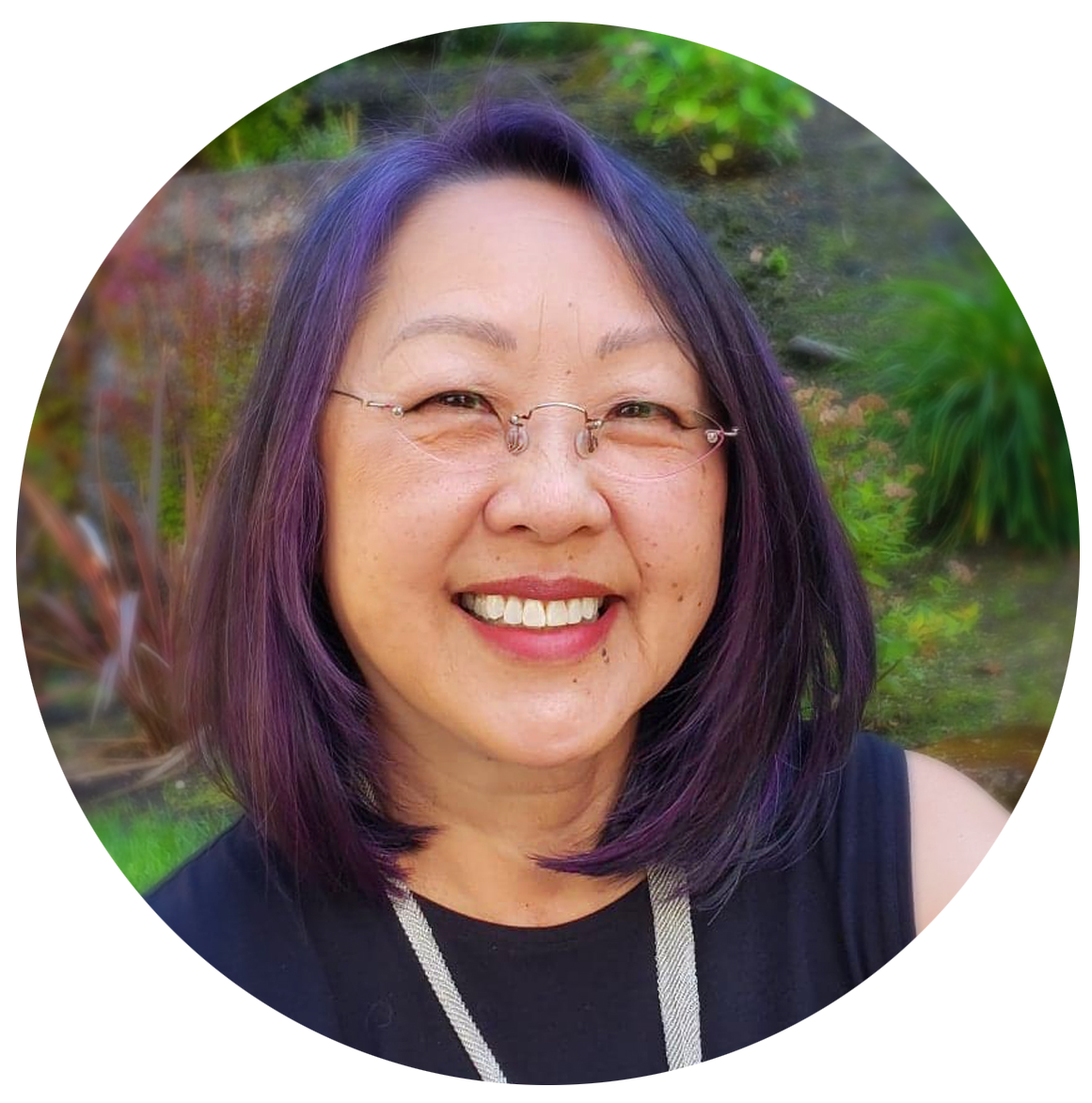
Elana Eng Lim was born in 1961 and raised in Seattle’s Chinatown. She received her B.A. from the University of Washington in 1983, and after a career in Silicon Valley and Microsoft, she raised her two boys with her husband, Randy. In 2017, as part of a museum community advisory committee, they helped curate a Wing Luke Museum exhibit, Apartment #507. She is writing a memoir of Chinatown, Tech, and her American life.
End Notes
[i] The Wing Luke Museum is also a National Park Service-named area. National Park Service. “Wing Luke Museum of the Asian Pacific American Experience” nps.gov, Accessed September 20, 2022. https://www.nps.gov/places/wing-luke-museum-of-the-asian-pacific-american-experience.htm
[ii] United States Courts. “Facts and Case Summary – Korematsu v. U.S.” www.uscourts.gov. Accessed September 15, 2022. Facts and Case Summary — Korematsu v. U.S. | United States Courts (uscourts.gov)
[iii] A story of my grandmother Ou Shee can be found at Seattle Histories: My Grandmother’s Hand – Front Porch, Seattle Department of Neighborhoods.
[v] Tong Chee Kiong & Chan Kwok Bun (eds.) Alternate Identities (Times Academic Press, 2001), 44.
[vi] Department of Archaeology + Historic Preservation. “David S. Dow.” Accessed September 16, 2022. https://dahp.wa.gov/historic-preservation/research-and-technical-preservation-guidance/architect-biographies/bio-for-david-s-dow
[vii] Sue Karren was the Assistant Director of the National Archive and Records Administration (NARA) of the Pacific Alaska Region (Seattle).
[viii] (Ng) Ark Wing, Case 38223/2-8, Box 1294; Chinese Exclusion Act Case Files, R.S.; Records of the Immigration and Naturalization Service, 1787 – 2004, Record Group 85; National Archives at Seattle, Washington.
[ix] Ibid.
[x] James G. Blaine & Walter S. Vail (editor), The Words of James G. Blaine (Boston: D.L. Guernsey, 1884), 122.
[xi] An act to execute certain treaty stipulations relating to the Chinese, May 6, 1882; Enrolled Acts and Resolutions of Congress, 1789-1996; General Records of the United States Government; Record Group 11; National Archives. Chinese Exclusion Act (1882) | National Archives
[xii] A Bill to Establish an Uniform Rule of Naturalization, and Enable Aliens to Hold Lands under Certain Conditions; 3/4/1790; (SEN1A-C1); Bills and Resolutions Originating in the House and Considered in the Senate, 1789 – 2002; Records of the U.S. Senate, Record Group 46; National Archives Building, Washington, DC. [Online Version, https://www.docsteach.org/documents/document/naturalization-act-of-1790, September 16, 2022]
[xiii] The House Joint Resolution Proposing the 13th Amendment to the Constitution, January 31, 1865; Enrolled Acts and Resolutions of Congress, 1789-1999; General Records of the United States Government; Record Group 11; National Archives.
[xiv] The House Joint Resolution Proposing the 14th Amendment to the Constitution, June 16, 1866; Enrolled Acts and Resolutions of Congress, 1789-1999; General Records of the United States Government; Record Group 11; National Archives.
[xv] Wong, Building Tradition, 27, 32.
[xvi] City of Seattle “Decennial Population 1900 – 2000” April 12, 2001. https://www.seattle.gov/Documents/Departments/OPCD/Demographics/DecennialCensus/1900to2000DecennialPopulationOverview.pdf.
[xvii] Jefferson Warren, The World of Chief Seattle, 13, 79.
[xviii] Margaret Riddle, “Chun Ching Hock opens the Wa Chong Company in Seattle on December 15, 1868.” HistoryLink.org, June 13, 2014, https://www.historylink.org/File/10800.
[xix] Wong, Building Tradition, 33, 56.
[xx] Margaret Riddle, “Chun Ching Hock opens the Wa Chong Company in Seattle on December 15, 1868.” HistoryLink.org, June 13, 2014, https://www.historylink.org/File/10800.
[xxi] The Daily Post Intelligencer Real Estate Transfers column “The Canals,” The Seattle Daily Post Intelligencer, June 6, 1883. 2.
[xxii] Williams, Ott, and HistoryLink staff, Waterway, 42-45.
[xxiii] Murray Morgan, Skid Road, (Seattle and London: University of Washington Press, 1951, 1960, 1971, 1978, 1982), 84.
[xxiv] Ron Chew, Reflections of Seattle’s Chinese Americans: The First 100 Years (Seattle: University of Washington Press and Wing Luke Asian Museum, 1994), 130.
[xxv] Wong, Building Tradition, 37.
[xxvi] Doug Chin, “Seattle’s Anti-Chinese Race Riot – February 7, 1886: The Day Seattle Imploded,” International Examiner, February 7, 2016, https://iexaminer.org/seattles-anti-chinese-race-riot-february-7-1886-the-day-seattle-imploded/.
[xxvii] Wong, Building Tradition, 157.
[xxviii] Chun Ching Hock’s business partner and relative was Chin Gee Hee. Wong, Building Tradition, 42.
[xxix] U.S. Census Bureau “Chinese and Japanese in the United States 1910 – Generated by E.A. Goldenweiser and Daniel Folkmar” September 15, 1914. 32. https://www2.census.gov/prod2/decennial/documents/03322287no71-80ch6.pdf
[xxx] Chun Ching Hock’s new business partner and manager was Woo Gen. Wong, Building Tradition, 43.
[xxxi] Wong, Building Tradition, 78-79.
[xxxii] (Ng) Ark Wing, Case 38223/2-8, Box 1294; Chinese Exclusion Act Case Files, R.S.; Records of the Immigration and Naturalization Service, 1787 – 2004, Record Group 85; National Archives at Seattle, Washington.
[xxxiii] Wong, Building Tradition, 156.
[xxxiv] Ron Chew, My Unforgotten Seattle, 217-218.
[xxxv] Wong, Building Tradition, 155-156.
[xxxvi] Wong, Building Tradition, 158.
[xxxvii] Wa Chong remained open at 719 King until 1953. Margaret Riddle, “Chun Ching Hock opens the Wa Chong Company in Seattle on December 15, 1868.” HistoryLink.org, June 13, 2014, https://www.historylink.org/File/10800.
[xxxviii] Ron Chew, My Unforgotten Seattle, 519.
BIBLIOGRAPHY
David B. Williams, Jennifer Ott, and the Staff of HistoryLink. Waterway: The Story of Seattle’s Locks and Ship Canal, Seattle: HistoryLink and Documentary Media, 2017.
Dr. Marie Wong, Building Tradition: Pan-Asian Seattle and Life in the Residential Hotels, Seattle: Chin Music Press, 2018.
Ron Chew, My Unforgotten Seattle, Seattle: International Examiner Press, 2020.
Warren Jefferson, The World of Chief Seattle: How Can One Sell the Air?, Summertown, Tennessee: Native Voices Book Publishing Co., 2001. Produced in cooperation with Chief Sealth’s tribe and the Suquamish Museum.

